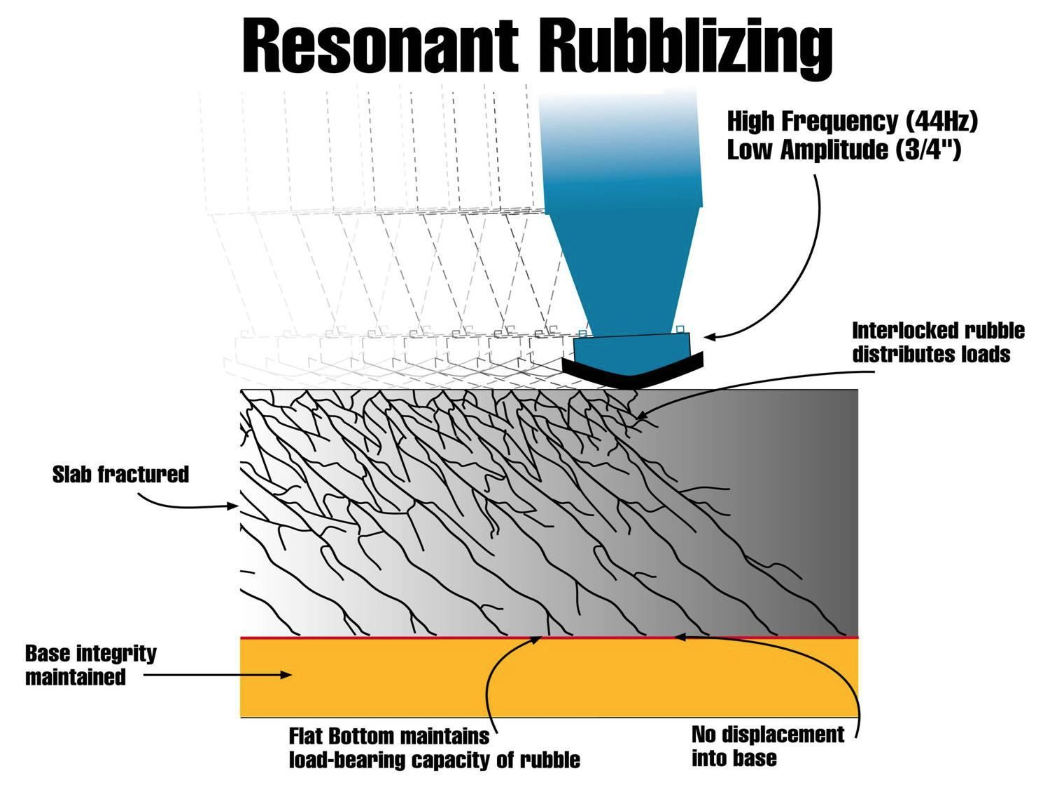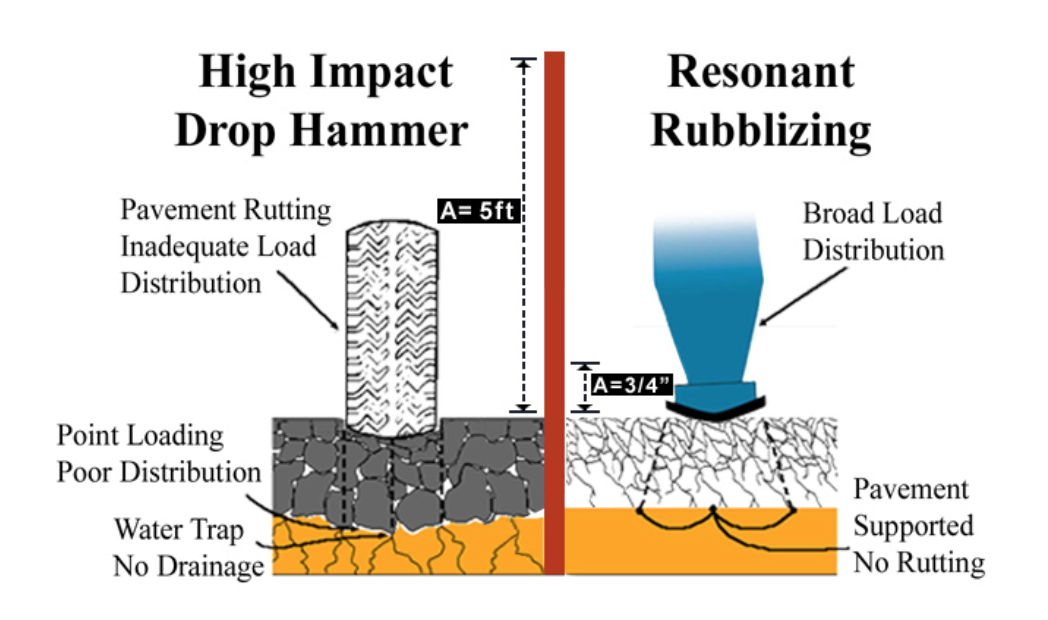WHAT IS RUBBLIZING?
Rubblizing is the process of fracturing pavement of Portland Cement Concrete into angular pieces for direct overlay. Resonant Machines, the pioneer of Rubblization, has participated in over 25 different independent studies over the last two decades. Such analysis has shown the rubblized roads with an asphalt overlay have an average useful life of 22 years, while costing 60% less than the cost of tear out and replace of concrete and taking approximately 1/5th the time. RMI averages about one lane mile per day or approximately 7,000 square yards. Rubblization should be considered first when rehabilitating a concrete road.

Rubblization destroys the integrity of existing concrete to allow for immediate overlay while still eliminating reflective cracking. The following are eliminated with Rubblization:
It should be noted that "true rubblization" with resonant beam technology, unique to Resonant Machines, does not destroy the sub base of roadways. Unlike other methods, including drop hammer methods, our resonant beam rubblizing fractures the slab at a low amplitude and high frequency on a shear plane 45 degree angle. Striking the pavement 44 times per second, at 2,000 lbs of pressure the concrete will be fractured throughout the entire slab including debonding the reinforcing steel while not damaging the base material or underground utilities. All energy of low amplitude, high frequency resonant rubblizing is absorbed in the concrete slab and does not drive fractured pieces into the sub base. It should also be noted that any rubblized roadway can also be overlayed with pcc concrete as well as hot mix overlay or superpave.

Our rubblization process also has benefits to high traffic urban areas, with reduced user costs. These arteries are very sensitive to traffic disruption from both the public and to local businesses. Rubblization is the most effective way to rehabilitate these arteries with minimum impact on both the driving public and local commerce. In addition to RMI's speed and efficiency, the low amplitude, high frequency method, reduces ground vibrations and noise impact of the surroundings.